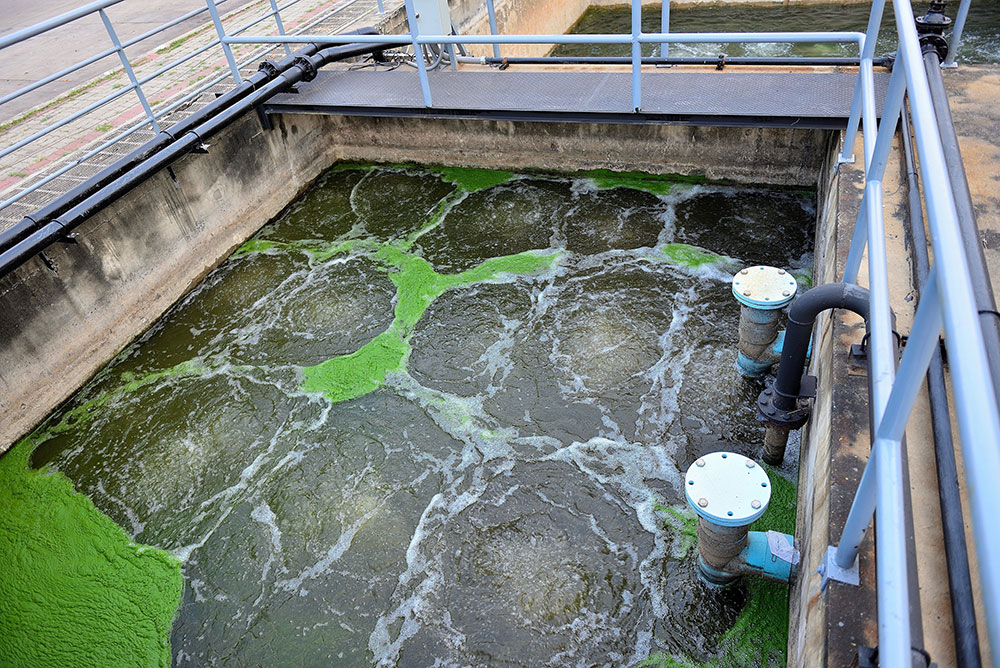In wastewater treatment, organic matter and microorganisms play a crucial and vital role. Microorganisms, due to their biological activities, decompose both mineral and organic substances. Regardless of how advanced and complex wastewater treatment packages may be, they are practically ineffective without microorganisms. Ultimately, it is these microorganisms that contribute to improving environmental conditions. Hence, in this article, we aimed to introduce you to microorganisms in industrial wastewater treatment.
What are microorganisms in industrial wastewater?
Microorganisms refer to a series of single-celled and small organisms used in biological wastewater treatment processes. These microorganisms are categorized into aerobic and anaerobic types. They act destructively to decompose organic and contaminated wastewater. Microorganisms improve water quality and reduce negative environmental impacts.
What roles do microorganisms play in wastewater treatment?
Organic substances are among the most common pollutants found in industrial effluents, which can cause significant harm to human health and animals if released into nature. Therefore, methods are needed to remove them. The use of microorganisms in wastewater treatment is the best method for removing these organic materials. They feed on organic matter and eventually grow and multiply.
Some microorganisms are capable of removing harmful mineral compounds equivalent to nitrogen and phosphorus from wastewater. They also have the ability to absorb and deposit heavy metals, thus removing these compounds from wastewater. Microorganisms reduce disease-causing pollutants present in wastewater and enhance the health of treated effluents.
Generally, microorganisms used for organic matter removal have different structures and are classified into various groups. Let’s delve into the types of microorganisms further.
Types of microorganisms
Aerobic, Anaerobic, and Facultative Bacteria
Aerobic bacteria primarily use oxygen to decompose wastewater pollutants. To ensure bacterial efficiency, oxygen is typically injected into wastewater. This injection allows bacteria to effectively decompose pollutants and support their growth and reproduction.
Another type of microorganism is anaerobic bacteria, which decompose organic pollutants in wastewater and ultimately produce methane gas. Interestingly, methane gas is usually utilized as an energy source. Anaerobic bacteria do not require oxygen to perform their tasks.
Facultative bacteria, as the name suggests, are bacteria in wastewater treatment that can adapt to aerobic or anaerobic conditions, but they generally prefer to function under aerobic conditions.
Fungi
Another important microorganism in industrial wastewater treatment is fungi. They typically fall into the category of aerobic organisms. Fungi require organic materials to grow and reproduce effectively. To function effectively, fungi should generally not be in the form of microbial masses, as these masses tend to clog filters and treatment equipment over time.
Algae as Microorganisms in Wastewater Treatment
Algae are a group of photosynthetic organisms that are generally visible everywhere and play a very colorful role in wastewater treatment. Algae have various applications in wastewater treatment, the most important of which is the removal of heavy metals, pesticides, and toxic substances.
Heterotrophic Microorganisms
Heterotrophic microorganisms are a type of microorganism that is divided into aerobic, anaerobic, and facultative groups. One of the most important features of these types of microorganisms is their ability to feed on organic materials. Therefore, they are used in biological filtration.
Types of Wastewater Treatment Microorganisms
Rotifers are another important type of microorganism in wastewater treatment. They are multicellular microorganisms generally classified as aerobic organisms and are used in the activated sludge process for wastewater treatment. Rotifers are typically used in the final stages of activated sludge treatment.
Protozoa Microorganisms
Protozoa microorganisms are single-celled microorganisms with a size of less than 100 micrometers. Generally, they are used in biological sludge treatment. Some protozoa, such as amoebae, can cause gastrointestinal diseases and are generally not used in wastewater treatment.
Filamentous Bacteria
As the name suggests, filamentous bacteria appear in the form of activated sludge. The number of filamentous bacteria depends on the nutrient conditions in wastewater systems.
Activated Sludge
Wastewater treatment using activated sludge is one of the most important and well-known wastewater treatment methods. Aerobic floc particles are typically referred to as activated sludge, but aerobic floc particles are generally ten times more metabolically active than anaerobic sludge. Activated sludge is usually exposed to oxygen-rich environments to increase.
Benefits of Microorganisms in Wastewater Treatment
Microorganisms in wastewater treatment systems have numerous advantages, including:
Breakdown and removal of organic compounds: Microorganisms can metabolize and break down organic compounds present in wastewater, reducing the organic load of wastewater.
Removal of harmful mineral compounds: Some microorganisms, such as nitrifying and denitrifying bacteria, are capable of removing nitrogen and phosphorus compounds from wastewater.
Removal of heavy metals: Microorganisms such as fungi have the ability to absorb and deposit heavy metals, leading to the removal of these compounds from wastewater.
Reduced pathogenicity: Non-pathogenic microorganisms in wastewater reduce pathogenic microorganisms and increase the health of treated wastewater.
Production of live sludge: During the treatment process, microorganisms produce live sludge that forms the basis of the sludge section and can be used for fertilization.
Conclusion
Today, microorganisms and bacteria are widely used to improve wastewater treatment processes in many wastewater treatment plants. Proper selection of these microorganisms is crucial as their choice depends on the geographical conditions of each region. It is worth noting that Sepahan Refinery Group designs and manufactures the best wastewater treatment packages using a team of skilled technicians. For information on the features of various wastewater treatment packages and the necessary equipment, as well as consulting in this area, seek assistance from Sepahan Refinery experts.

